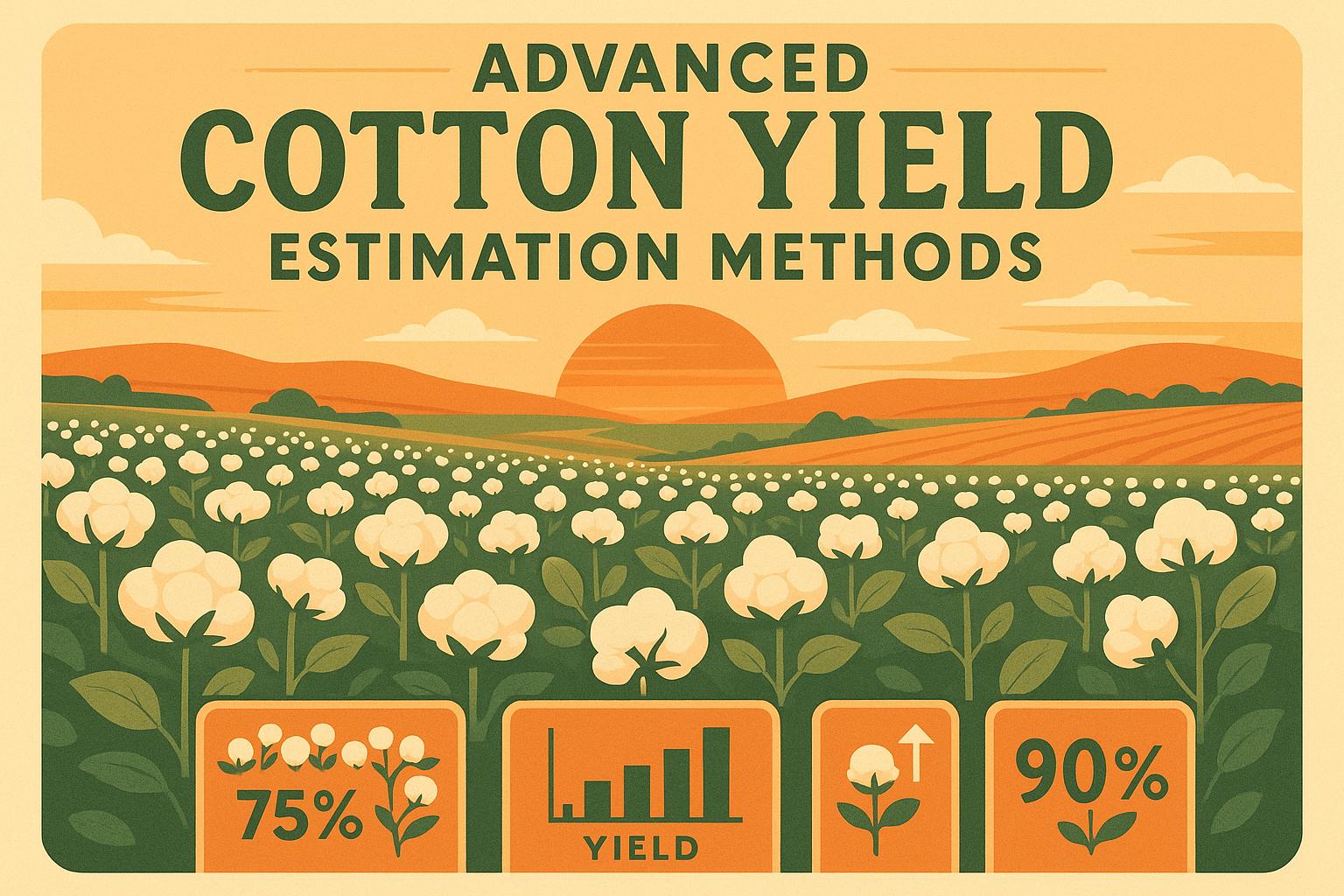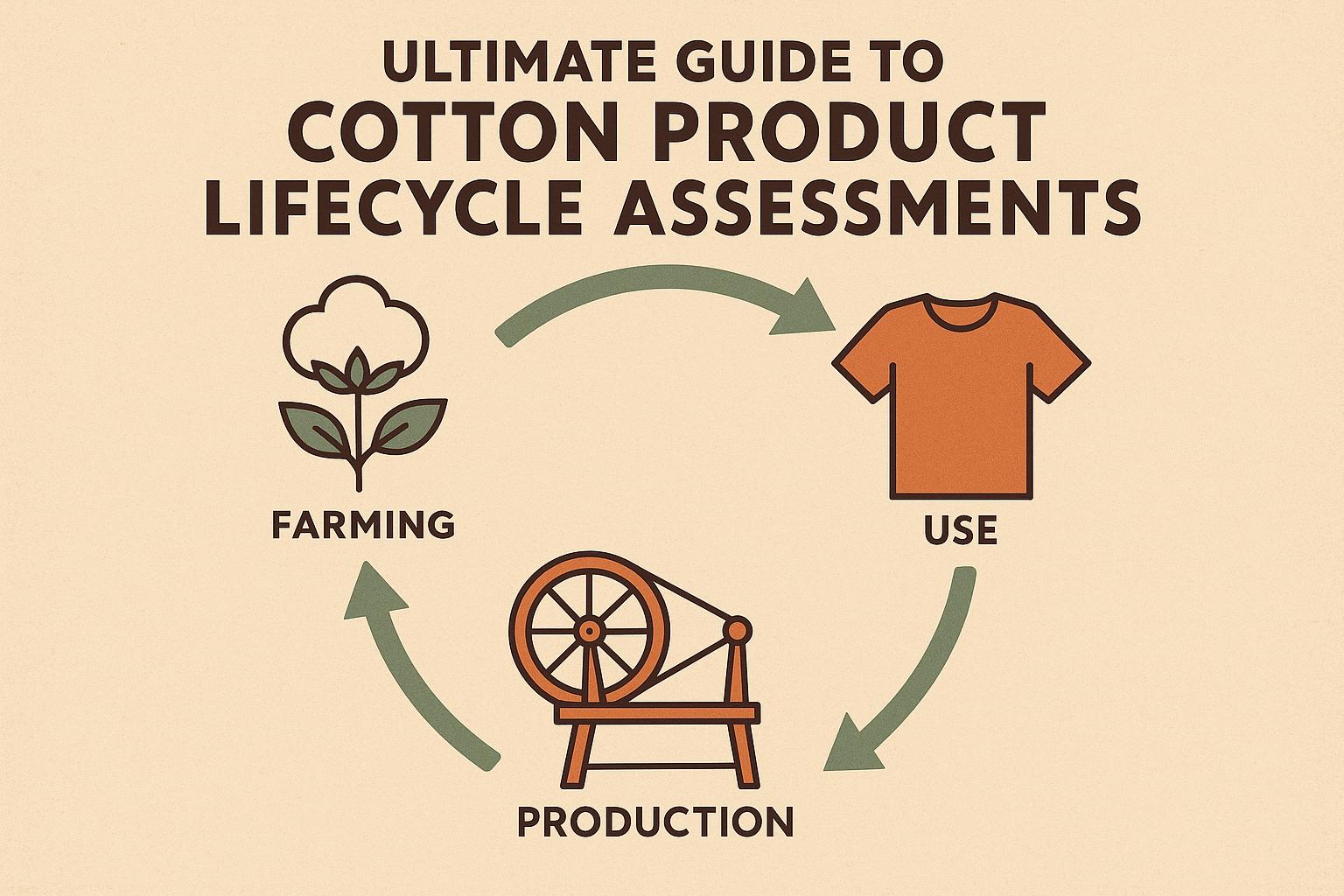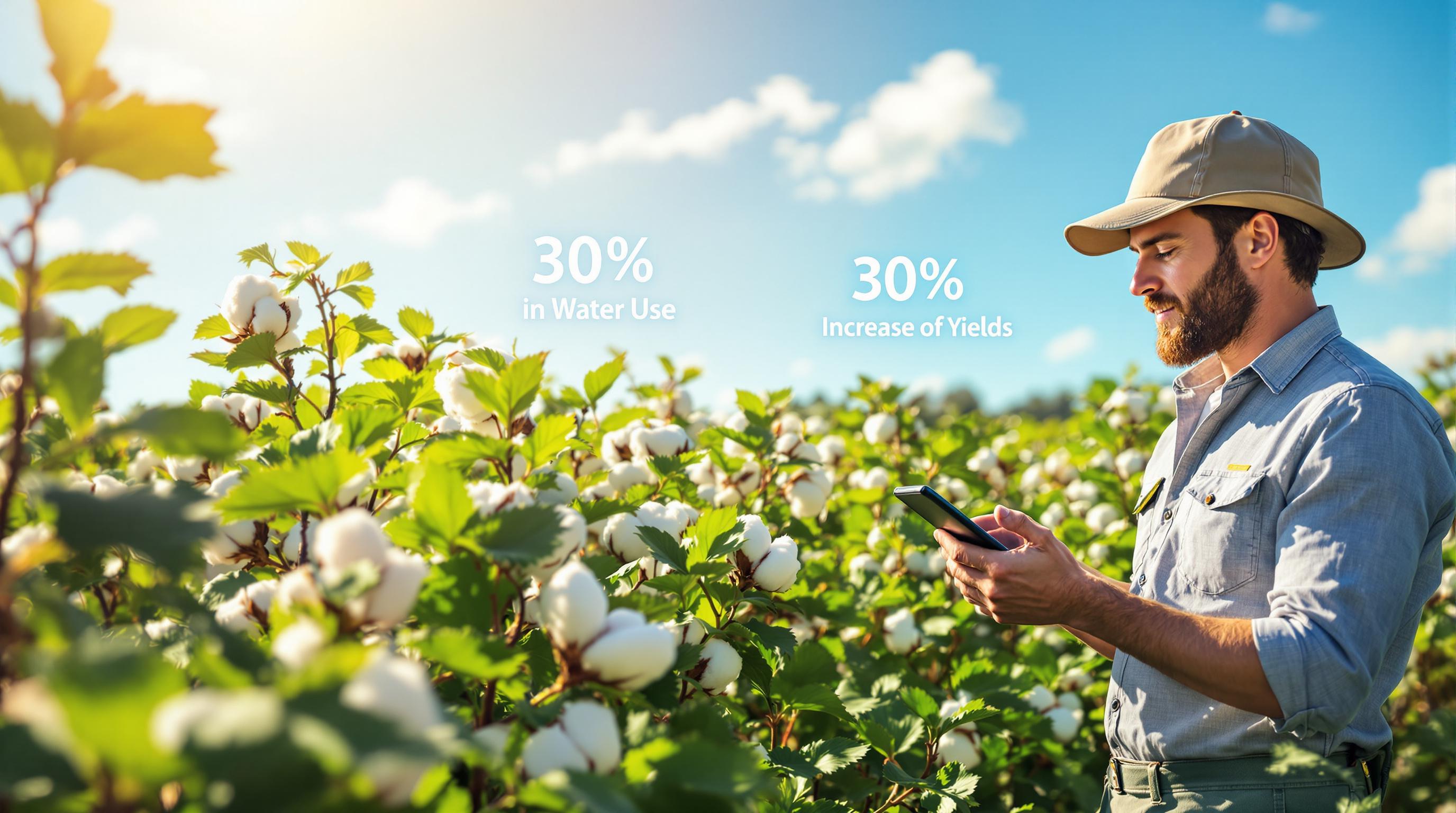Cotton's journey from field to gin involves three key steps: harvesting, transporting, and processing. Here's a quick summary of how it works:
- Harvesting: Cotton is picked using machines and compressed into protective modules for transport.
- Transporting: Modules are moved to gins using trucks or trailers, with costs ranging from $60 to $90 per load depending on distance.
- Processing at the Gin: Cotton is dried, cleaned, separated into lint and seeds, and prepared for storage or further use.
Efficient logistics, moisture control, and tools like GIS software ensure cotton quality is preserved throughout the process. Most cotton travels an average of 7 miles to a gin, but some farms require longer hauls, making route planning and vehicle choice essential. For more insights, tools like cottongins.org help producers find nearby gins and save on transport costs.
Want to know more about each step? Keep reading for a detailed breakdown.
An overview of ginning cotton
Guide to Transporting Cotton
Efficient cotton transportation is key to preserving its quality and ensuring smooth processing. Here's a guide to moving cotton from the field to the gin.
1. Harvesting and Creating Modules
Modern mechanical pickers simplify the harvesting process by forming cotton into dense, on-site modules, ready for transport [3]. These modules are designed to protect the cotton while making transportation easier and maintaining its quality.
Module builders compress the cotton into standardized bundles, which can vary based on regional transportation rules. This ensures the modules are uniform and ready for safe transit to the gin [4].
2. Transporting Modules to the Gin
Specialized trucks with protective covers and safety features are used to move cotton modules, adhering to local regulations [4]. This method ensures the cotton remains intact and free from damage during the trip.
Nearby farms coordinate deliveries to keep the gin running efficiently, reducing transportation time and ensuring a steady flow of cotton for processing [4]. This approach minimizes handling and helps maintain the cotton's condition.
3. Unpacking Modules at the Gin
At the gin, module feeders equipped with conveyor systems break down the compacted cotton, ensuring a smooth and steady flow into the gin building [5]. These systems are designed to balance efficiency with quality, preventing contamination during the process.
The entire operation relies on close coordination between harvesting crews, transportation teams, and gin operators. This teamwork ensures the process runs smoothly and the cotton retains its quality from the field to the gin [5]. Once unpacked, the cotton is ready for cleaning and separation in the ginning process.
Overview of the Ginning Process
Modern cotton gins use advanced machinery and carefully managed steps to turn raw cotton into ready-to-sell products. After the cotton modules arrive at the gin, they go through a series of processes to remove impurities, separate fibers, and prepare the final products for the market.
1. Drying and Cleaning Cotton
Gin dryers use temperature-controlled systems to adjust moisture levels, protecting the fibers and ensuring the cotton is ready for processing [5]. Cleaning machines then remove debris and other contaminants, making the cotton suitable for the next steps [1].
2. Separating Lint and Seeds
At the gin stands, circular saws efficiently separate the fibers (lint) from the seeds. This step ensures clean fiber extraction and proper seed separation. Modern gins can process up to 60 bales per hour, showcasing their efficiency [5][1].
3. Baling Lint and Processing Seeds
Once separated, the cotton components are handled differently:
Lint Processing:
- Lint is compressed into 500-pound bales and stored in climate-controlled warehouses, ready to be shipped to textile mills [5][1].
Seed Processing:
- Seeds are turned into products like cottonseed oil, animal feed, and materials for paper and plastics [5].
Each step is carefully controlled to maintain fiber quality while maximizing efficiency. Proper ginning not only prepares cotton for market but also supports smooth storage and transportation, keeping the supply chain running effectively.
sbb-itb-0e617ca
Logistics and Supply Chain Management
Modern logistics systems play a crucial role in streamlining the cotton processing phase, building on the careful preparation and unpacking processes established at the gin.
1. Improving Transport Efficiency
Today's transport operations rely heavily on GPS systems for real-time shipment tracking, which helps optimize routes and reduce delays. In the Western Cotton Region, truck-mounted module movers have become a game-changer. By eliminating the need for pallets, these innovations boost load capacity and cut costs for long-distance hauls [2][4].
Distance is a key factor in transportation planning. Most farms are located within 10 miles of their designated gin, but some farms in remote areas require transportation over distances of up to 100 miles. For these longer hauls, semi-tractor trailers offer significant savings compared to module trucks, reducing expenses by thousands of dollars per trip [4].
2. Keeping Cotton Quality High
Protecting cotton quality during transport is essential. Measures such as using tarps or metal van-type trailers help prevent contamination and material loss. Producers and gin managers often use GIS software to plan efficient routes, reduce travel time, and balance processing loads. This ensures cotton is delivered promptly and in excellent condition [2][4].
Using cottongins.org for Gin Locations

Efficient transportation is essential, but finding the right cotton gin location can make a big difference in cutting costs and preserving quality.
Locating Nearby Gins and Adding Locations
Cottongins.org provides a state-by-state search tool to help producers find cotton gins across the country. By using this tool to select gins closer to their operations, producers can cut transportation costs by up to 20% while ensuring cotton quality remains intact during transit.
The platform stays up-to-date thanks to users who contribute by adding new gin locations. Submissions include key details like addresses, capacity, and contact information, helping everyone make smarter choices about their ginning partners.
Sponsorship Opportunities
Businesses in the cotton industry can advertise on the platform, with sponsorship packages ranging from $200 to $400 per month. These packages include perks like premium ad placement, social media promotion, and free annual posts. It's an ideal option for equipment manufacturers, transportation providers, and gin operators, especially during the busy harvest season.
Conclusion and Main Points
The journey of cotton from the field to the gin is a carefully managed process that balances logistics and quality preservation. Modern ginning facilities, capable of processing 12 to 60 bales per hour [1], depend on smooth transportation and efficient handling to maintain this pace.
Transportation plays a critical role in cotton processing. Studies show that around 80% of cotton travels an average of seven miles from the farm to the gin [4]. Tools like cottongins.org help producers locate nearby gins, making it easier to plan efficient routes and delivery schedules, which can cut costs and save time.
One standout example of effective logistics is the Imperial Valley model. This system uses coordinated harvesting and transportation strategies to keep ginning operations running smoothly, showcasing the benefits of careful planning [4].
Maintaining cotton quality during transport requires proper module construction, timely delivery, and the right vehicles for both short and long distances. As the industry evolves, cotton storage systems are becoming more common to meet changing demands [4].
For producers aiming to improve their operations, focusing on a few critical areas can make a big difference:
- Leveraging advanced technologies like GPS tracking and route planning
- Strategically organizing delivery schedules
- Keeping equipment in good working condition
- Using resources like gin location tools effectively
These elements, when combined, can significantly improve both efficiency and quality in cotton processing.
FAQs
This section answers common questions about how cotton is transported and handled, expanding on the earlier steps discussed.
How are cotton bales transported?
Once ginned, each 500-pound bale is compressed and wrapped in plastic or rough cotton cloth for protection. Forklifts and trucks are then used to move the bales to warehouses [1].
What's the typical distance from farm to gin?
About 80% of cotton travels an average of seven miles from the farm to the gin, which helps to keep transportation costs manageable [4].
What vehicles and protective methods are used for cotton transport?
Cotton is primarily moved using module trucks and semi-tractor trailers. During transit, modules are covered with tarps or placed in metal trailers, while bales are wrapped in plastic or cloth to ensure their quality is preserved over longer distances [2][4].
What factors influence transport costs?
Transportation costs vary based on distance. For example, a module truck load costs around $60 for trips within 15 miles, while a semi-tractor trailer load costs about $90. Longer distances result in notably higher costs [2].
How do farmers decide which gin to use?
Farmers typically select a gin based on:
- How close it is to their fields
- The gin's capacity and efficiency
- Any financial relationships with specific operations [4]
These considerations help ensure that the cotton remains in good condition and retains its value throughout the supply chain.


